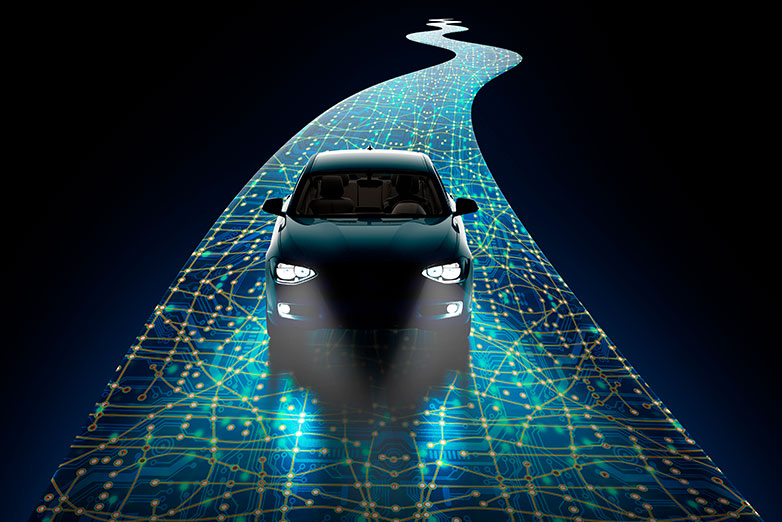
[ad_1]

For the previous decade, engineers have been working exhausting to make the dream of a driverless automotive a actuality. With the quiet launch of Google’s Waymo undertaking in 2009, the race was on to develop and deploy automobiles that may do every thing a human-piloted automobile would do — however to do it higher.
The guarantees surrounding autonomous automobiles, or AVs, have been massive and daring. In 2012, Google co-founder Sergey Brin introduced his plan to have AVs on the highway “inside 5 years or sooner.” In 2016, Lyft CEO John Zimmer proclaimed that self-driving automobiles can be so prevalent by 2025 that vehicle possession can be almost out of date. The entire main auto producers have introduced plans for AVs and invested closely of their improvement.
Though the concept of automobiles that don’t want a human on the wheel was alarming for many drivers, it initially appeared like an amazing alternative for companies. AVs would remove the bills related to hiring and retaining certified drivers, scale back the chance of crashes, which lowers liabilities to the corporate and it could give companies a automobile that, not like a human operator, doesn’t want relaxation or breaks
Nonetheless, the fact of driverless automobiles has didn’t ship on these authentic guarantees. Previously few years, hiccups and slowdowns have proven a widening hole between what was initially proposed and what may really occur. Now, plainly AV builders are nowhere near having AVs sharing the highway.
On the current Worldwide Client Electronics Present in Las Vegas, tech firms showcased improvements that stepped away from earlier claims and displayed scaled-back visions of the longer term. As a substitute of smooth driverless pods zipping by site visitors, the primary AVs in motion will most definitely be robotic shuttles and taxi providers that journey a predetermined route at a comparatively low pace, in accordance with The Wall Avenue Journal.
Driverless automobiles will finally share our roads, but it surely’s changing into extra evident that the expected takeover of human drivers isn’t proper across the nook. Listed here are 5 elements which have helped hit the brakes on autonomous automobiles.
No. 1: The Expertise Isn’t There But
Whereas builders have made spectacular developments in automotive know-how, there are nonetheless sure limitations sidelining autonomous automobiles. Synthetic intelligence can learn and react to many alternative conditions, but it surely’s restricted by sure circumstances.
These circumstances create hazard for different automobiles on the highway. Climate circumstances reminiscent of fog and snow make it troublesome for the lasers to learn the highway, whereas the angles at which the solar hits a digital camera could impede the automobile from studying site visitors lights.
No. 2: The Roads Aren’t Prepared
To ensure that driverless automobiles to navigate roadways, they’ve to have the ability to “learn” the highway. In 2018, the Federal Freeway Administration launched a report, Making ready for the Way forward for Transportation: Automated Automobile 3.0, which detailed a few of the methods infrastructures have to be up to date to accommodate driverless automobiles. The report advises state and native governments to think about working with automobile builders to see what infrastructure necessities will likely be wanted to accommodate AVs.
In accordance with an announcement from Deputy Federal Freeway Administrator Brandye L. Hendrickson, the report is designed to “lay the groundwork for the infrastructure of the longer term.” However for now, it’s obvious that a lot work stays to be accomplished to make these infrastructures viable for self-driving automobiles.
No. 3: Crashes Have Delivered a Wake-up Name
Proponents have mentioned that one of many massive advantages of self-driving automobiles is the power to remove human error and, subsequently, foster a safer driving expertise. However a couple of crashes which have taken place have demonstrated that it’s not but secure.
Excessive-profile incidents, such because the demise of an Arizona girl who was struck by a self-driving Uber automobile and the deadly crash of a Tesla Mannequin X that was on autopilot, drew consideration to the truth that auto producers nonetheless have many issues of safety to resolve.
A client group referred to as Advocates for Freeway and Auto Security is pushing for amendments to a invoice presently within the U.S. Senate to demand stricter requirements for driverless automobiles, together with requiring a “imaginative and prescient check” for AVs to make sure they’ll correctly learn and reply to their environment.
No. 4: Drivers Concern Automation
A report launched in 2023 by the American Vehicle Affiliation confirmed that solely a small variety of People think about driverless automobiles. The report revealed that 68% of drivers can be scared to journey in a self-driving automobile, up from 55% in 2022. What’s extra, 63% of adults mentioned they might really feel much less secure sharing the highway with autonomous automobiles whereas strolling or using a bicycle.
To regain the belief of drivers, “there have to be safeguards in place to guard automobile occupants and the motorists, bicyclists, and pedestrians with whom they share the highway,” mentioned Megan Foster, AAA’s director of Federal Affairs.
No. 5: There’s No Substitute For Human Drivers
Regardless of all the guarantees of automated know-how, it lacks lots of the benefits supplied by human drivers. A white paper by Brandon Schoettle of the College of Michigan Transportation Analysis Institute reveals that driverless automobiles could be too cautious and that hesitation can create confusion for different automobiles on the highway.
In addition they could be confused by modifications within the highway or environments they’re not accustomed to. In the meantime, human drivers are extra adaptable and higher at studying indicators and adjusting their driving conduct to suit their state of affairs.
Alert and well-trained drivers proceed to be the most effective wager for secure roads. And when drivers are educated to successfully see, analyze and react to the altering environments of the highway, they make the roads safer for everybody.
[ad_2]

